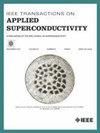中国下一代核聚变装置猝灭检测系统高压信号传输电缆串扰研究
IF 1.8
3区 物理与天体物理
Q3 ENGINEERING, ELECTRICAL & ELECTRONIC
引用次数: 0
摘要
中国下一代核聚变装置的猝灭检测系统面临着巨大的挑战,因为它们的磁体系统比以前的磁体系统(如EAST和KSTAR)具有更高的存储能量和更快的放电速率。在等离子体放电阶段和超导磁体猝灭电流放电阶段,电流的快速变化会在磁体上产生高且动态变化的电压,特别是在中央螺线管和极向磁场线圈中,会产生千伏级的感应电压。这些高压信号可以出现在连接磁铁的淬火检测信号电缆上,导致同一电缆桥架内这些电缆之间的电容耦合串扰。这种串扰严重干扰了磁猝灭检测信号,影响了磁猝灭的准确识别。这可能潜在地导致失稳检测错误或失稳检测失败。为了解决这一问题,本文对相声现象进行了系统的研究。本文首先描述了淬火检测信号的特性。在此基础上,建立了信号电缆串扰的电路模型,分析了串扰的影响因素。最后,通过专门的实验验证了该模型,其结果用于预测操作环境中的串扰水平,并提出有效的缓解策略,以确保鲁棒猝灭检测。本文章由计算机程序翻译,如有差异,请以英文原文为准。
Research on Crosstalk of High-Voltage Signal Transmission Cables for Quench Detection System of Chinese Next-Generation Fusion Device
The quench detection system for next-generation fusion device of China face enormous challenges, as their magnet systems are characterized by significantly higher stored energy and faster discharge rates than those in predecessors, such as EAST and KSTAR. During both the plasma discharge phase and the superconducting magnet quench current discharge phase, rapid current changes induce high and dynamically varying voltages on magnets, particularly in the central solenoid and poloidal field coils, where kilovolt-level inductive voltages can arise. These high-voltage signals can appear on the quench detection signal cables connected to the magnets, leading to capacitive coupling crosstalk between these cables within the same cable tray. Such crosstalk severely interferes with the quench detection signals, compromising the accurate identification of magnet quenches. This can potentially lead to either false quench detection or a failure in quench detection. To address this, this article presents a systematic investigation into the crosstalk phenomenon. It begins by characterizing the properties of quench detection signals. Subsequently, an electrical circuit model for signal cable crosstalk is established, and the influencing factors of crosstalk are analyzed. Finally, the model is validated through a dedicated experiment, whose results are used to predict crosstalk levels in the operational environment and to propose effective mitigation strategies to ensure robust quench detection.
求助全文
通过发布文献求助,成功后即可免费获取论文全文。
去求助
来源期刊

IEEE Transactions on Applied Superconductivity
工程技术-工程:电子与电气
CiteScore
3.50
自引率
33.30%
发文量
650
审稿时长
2.3 months
期刊介绍:
IEEE Transactions on Applied Superconductivity (TAS) contains articles on the applications of superconductivity and other relevant technology. Electronic applications include analog and digital circuits employing thin films and active devices such as Josephson junctions. Large scale applications include magnets for power applications such as motors and generators, for magnetic resonance, for accelerators, and cable applications such as power transmission.
 求助内容:
求助内容: 应助结果提醒方式:
应助结果提醒方式:


